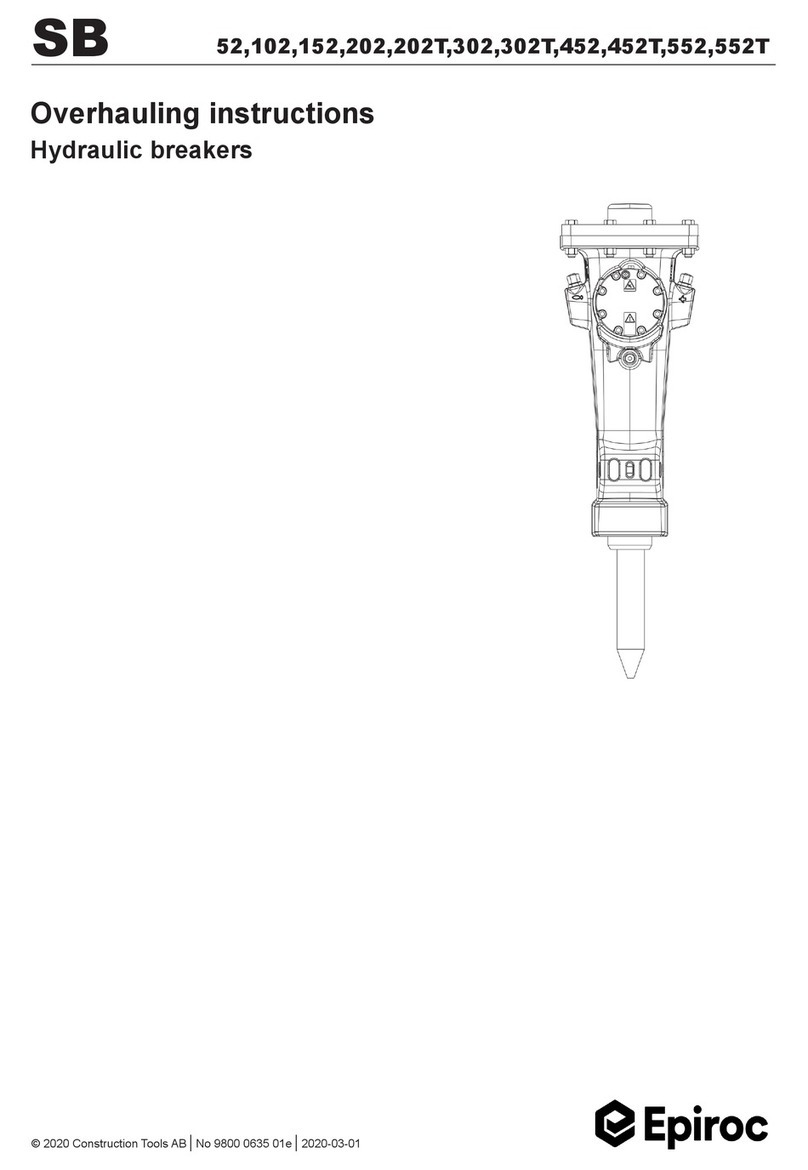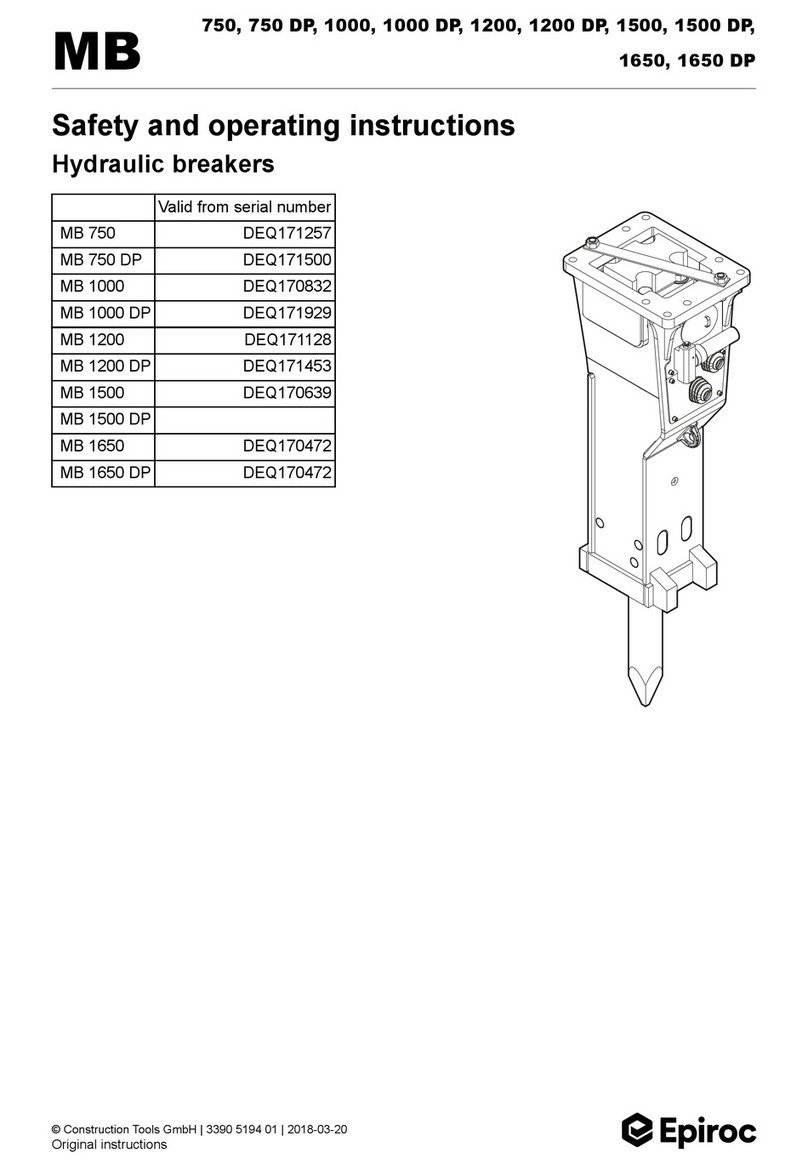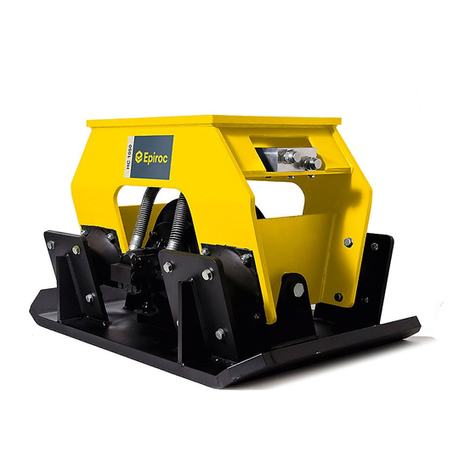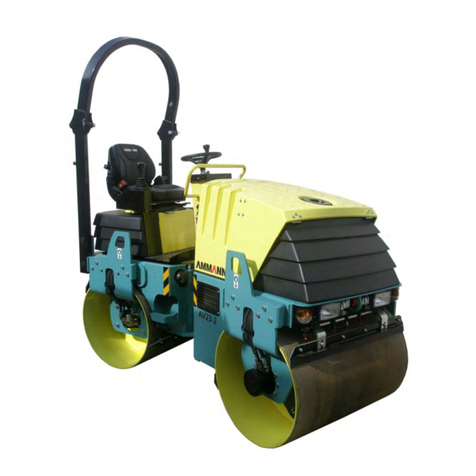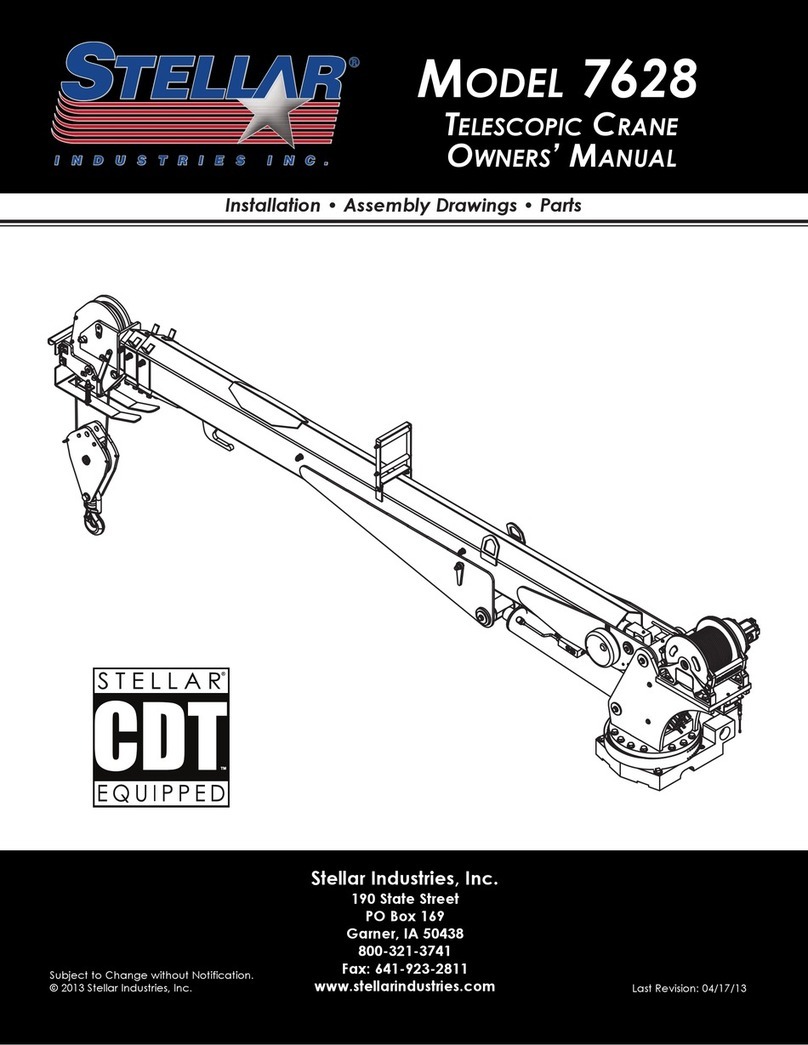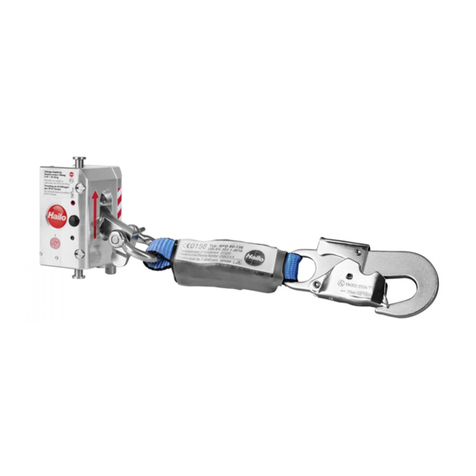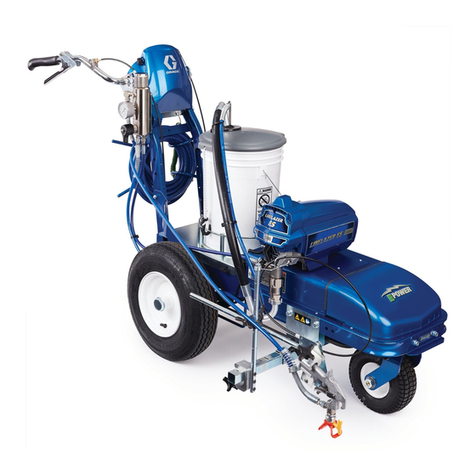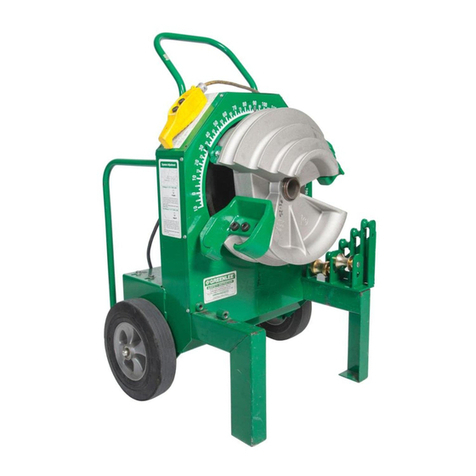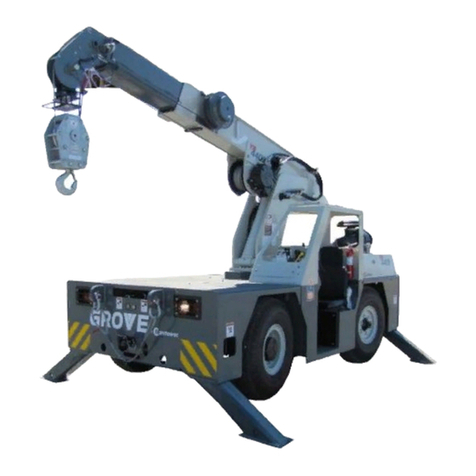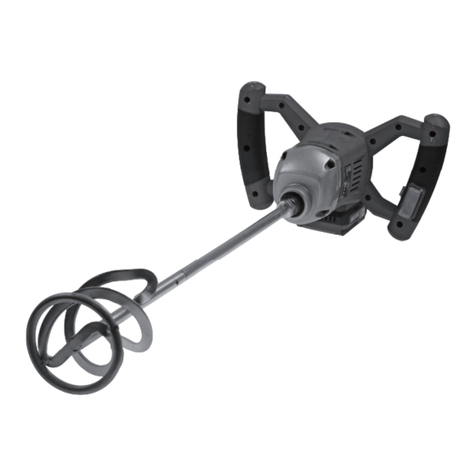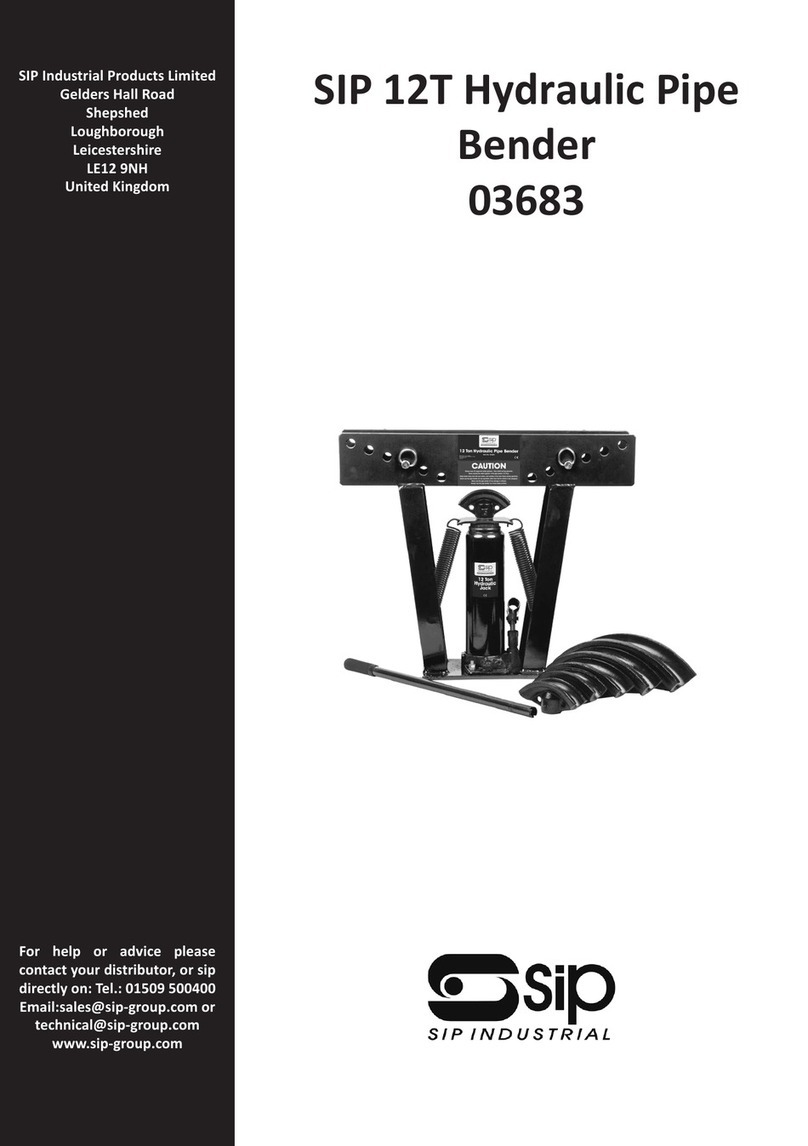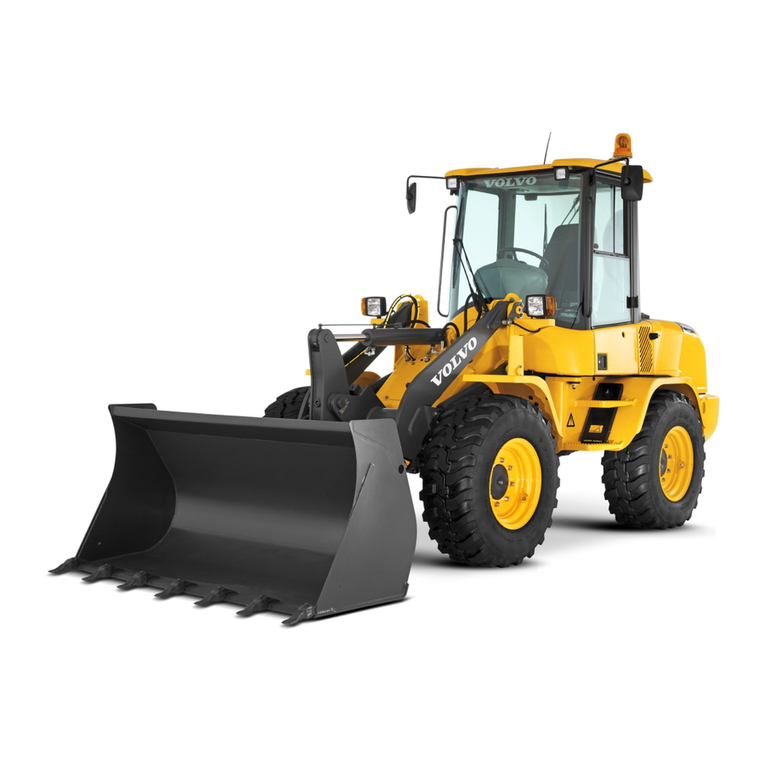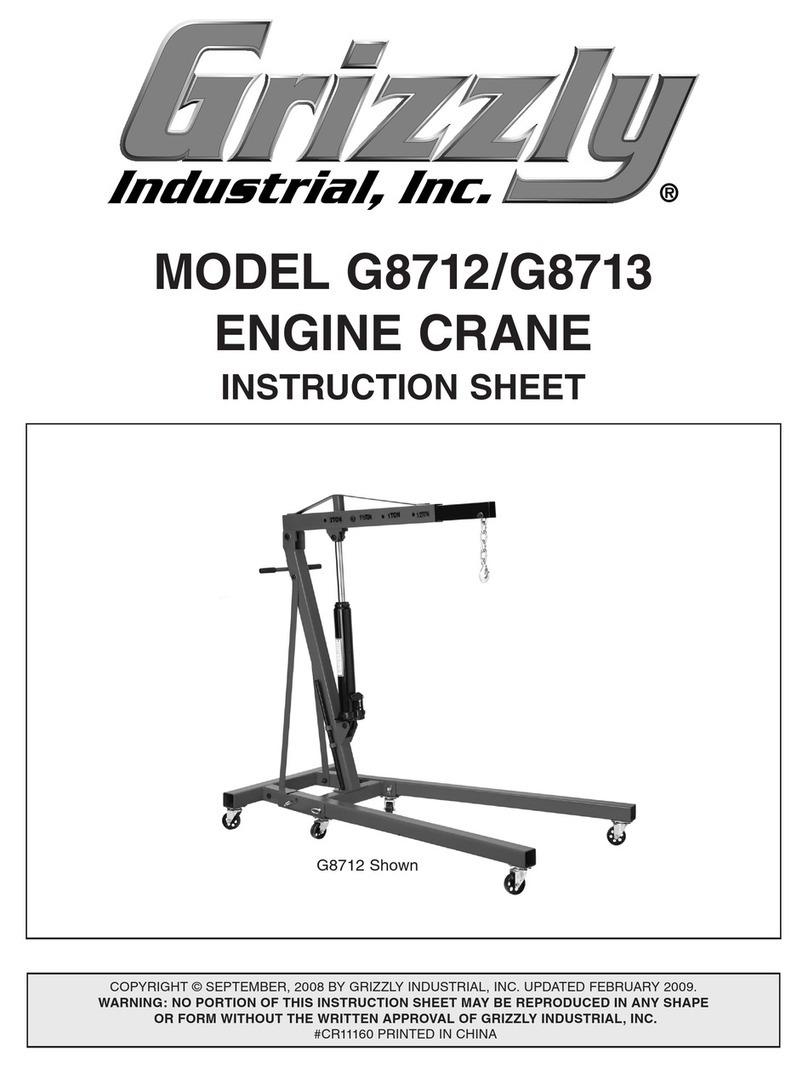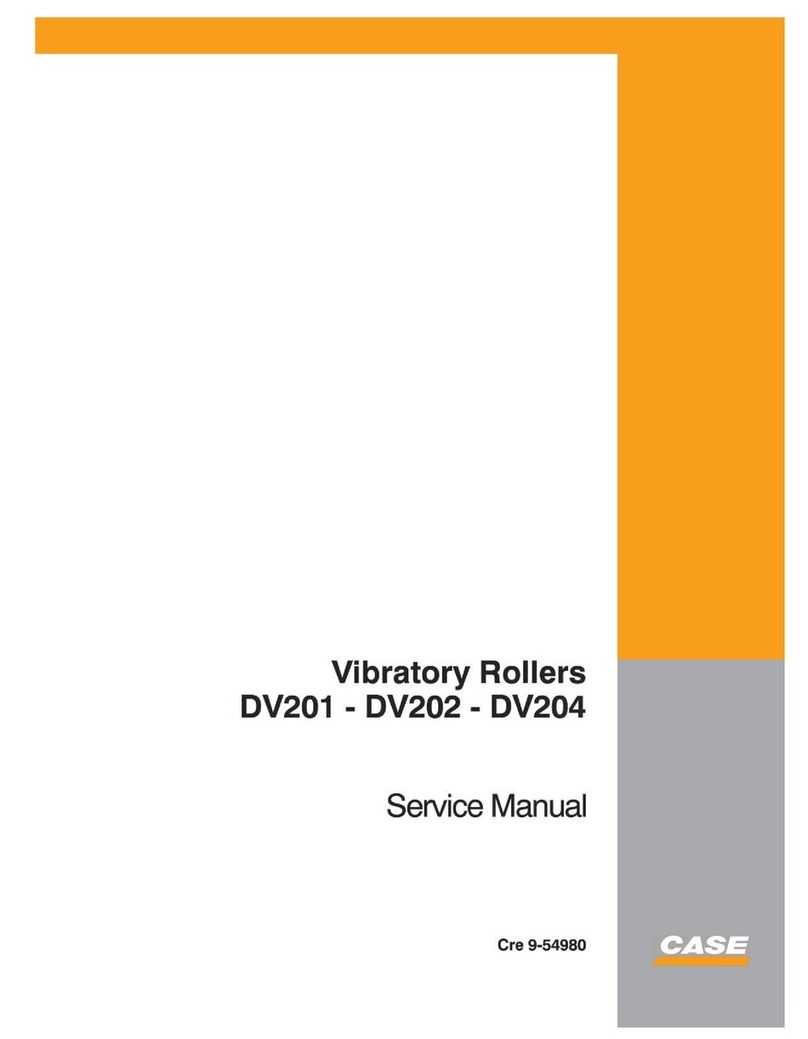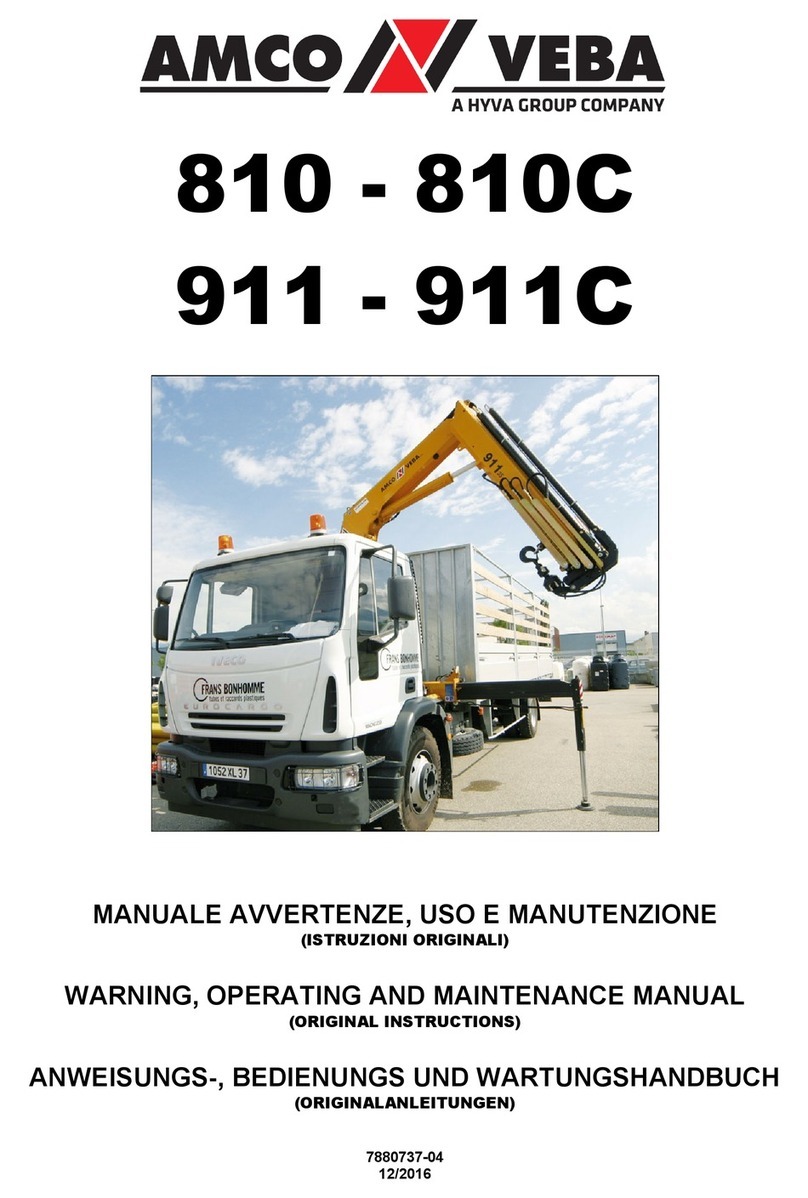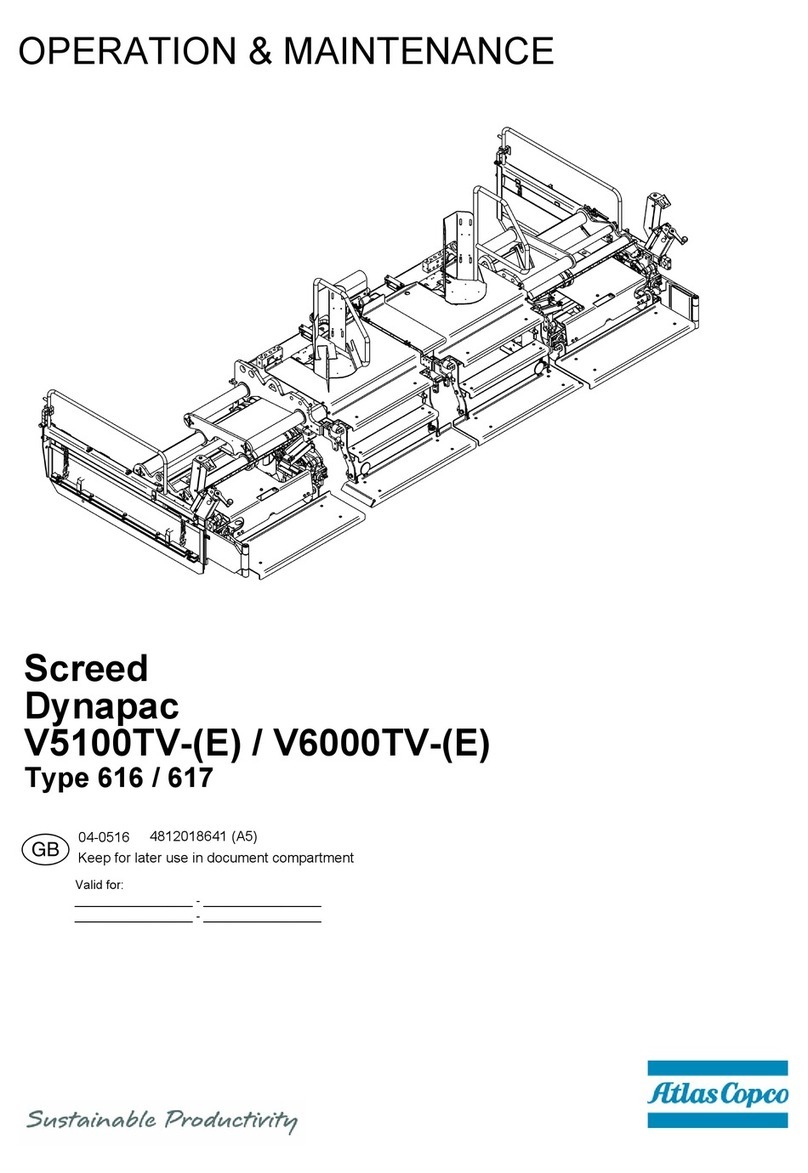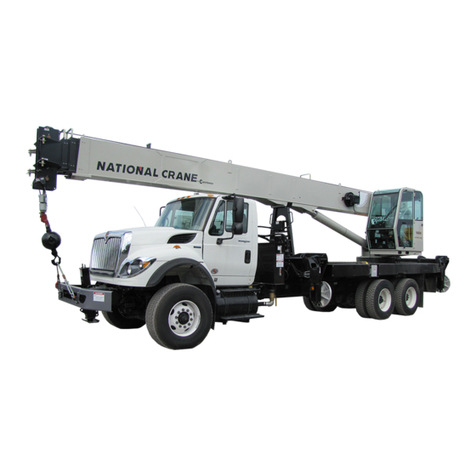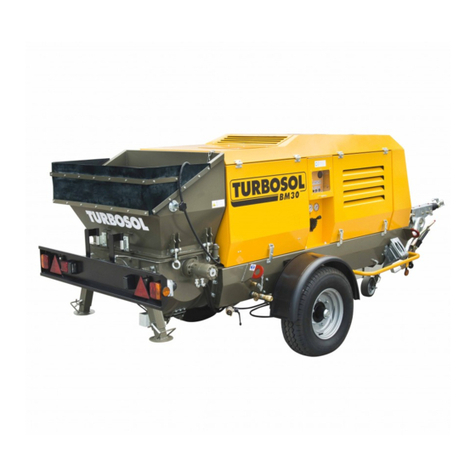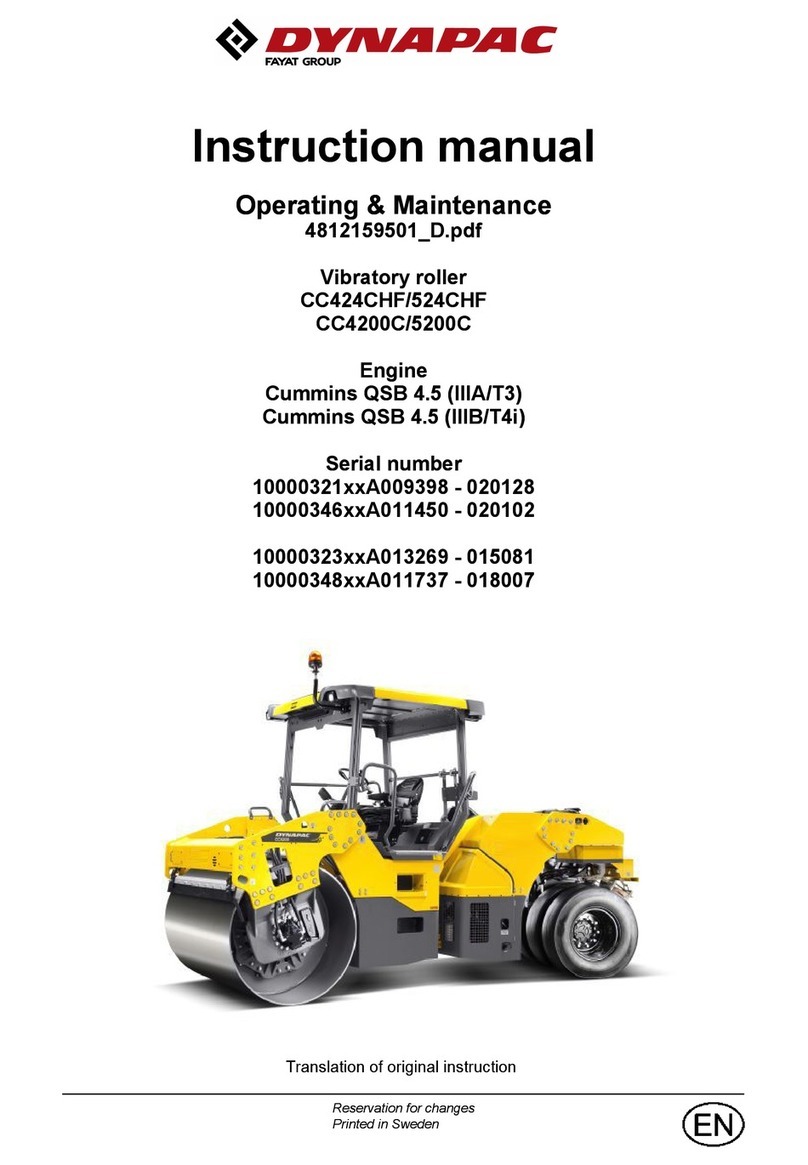Epiroc COP M6 Specifications

Secoroc COP M-Series
down-the-hole hammers
COP M6, COP M7, COP M8
Operator’s instructions
Spare parts lists

2
Contents
Introduction �����������������������������������������������������������������3
General info......................................................................................... 3
How the hammer works..................................................................... 3
Safety����������������������������������������������������������������������������4
Preparations�����������������������������������������������������������������4
Hose connection ................................................................................. 4
Setting up the rig ................................................................................ 5
What drill rig do you need ................................................................. 5
Safety: Preparations ........................................................................... 5
Operation ���������������������������������������������������������������������5
Getting started .................................................................................... 5
Impact.................................................................................................. 5
Rotation ............................................................................................... 6
Feed ..................................................................................................... 7
Flushing............................................................................................... 7
How to collar the hole ........................................................................ 8
Always rotate to the right!................................................................. 8
Safety: Operation................................................................................ 8
Service��������������������������������������������������������������������������9
How to break the driver chuck joint .................................................. 9
Tools for removing the drill bit and the backhead ........................... 9
How to loosen the threads of the hammer .................................... 10
How to replace the drill bit............................................................... 10
COP M service instructions��������������������������������������� 11
Disassembly of COP M hammer ......................................................11
Reassembly of COP M hammer ...................................................... 12
Other instructions������������������������������������������������������13
Wear limits and how to measure .................................................... 13
Wear to the driver chuck and casing ............................................... 14
Lubrication �����������������������������������������������������������������14
Dirt in the hammer ........................................................................... 15
Extend the life of your hammer....................................................... 15
Economy kits..................................................................................... 15
Grinding the drill bit ��������������������������������������������������16
Grinding equipment ��������������������������������������������������16
Safety: Service .................................................................................. 17
Technical data ������������������������������������������������������������17
Trouble shooting��������������������������������������������������������18
Spare parts list�����������������������������������������������������������19

3
Introduction
General info
The down-the-hole hammer is a percussion hammer drill.The
hammer works down the hole at the end of the drill string, where
the impact piston strikes the drill bit directly.
Compressed air is led to the hammer via the rotation spindle and
drill pipes. Exhaust air from the hammer is discharged through
holes in the drill bit and used to flush clean the drill hole. Rotation
is provided by a rotation unit on the feed beam and transmitted to
the hammer via the drill pipes.The drill pipes are threaded so that
the drill string can be extended as the hole becomes deeper. Feed
force is also transmitted to the hammer via the rotation unit and
drill pipes.
How the hammer works
The Secoroc COP M6, M7 M8 down-the-hole hammers and drill
bits operate at the bottom of the hole as one unit.
A driver chuck (2) threads into the front end of the casing (7).The
splined union between the driver chuck and drill bit (1) transmits
rotation to the drill bit.The front end of the driver chuck trans-
mits feed force to the drill bit.The split stop ring (3) limits axial
movement of the drill bit.The check valve (8) prevents water from
entering the hammer through the drill bit when the compressed
air supply is shut off.
When feed force is applied, the drill bit is pushed into the ham-
mer and pressed against the front of the driver chuck.The impact
piston (5) strikes the shank of the drill bit directly.The passage
of compressed air through the hammer is directed by the piston,
control tube (6) and bit bushing (4), which all have regulating
ducts. A built-in damping chamber cushions the piston return
stroke and increases the impact frequency.
After the compressed air has imparted most of its pressure en-
ergy to the piston, it is led as exhaust air through airchannels on
the splines of drill bit and chuck.The exhaust air then emerges as
flushing air through holes in the drill bit head.This gives efficient
transportation of cuttings out of the drill hole
When the hammer is lifted off the bottom of the hole, the piston
drops into the air blowing position.This disengages percussion
and gives air blowing only, that is, a large volume of air flows
straight through the hammer and drill bit. During drilling, air
blowing starts if the drill bit loses contact with the bottom of the
hole.The hammer starts operating again as soon as the bit is
pressed back against the driver chuck. Air blowing is used when
powerful flushing of the drill hole is required, and in certain dif-
ficult drilling conditions.
Friction between the drill pipes and the hole wall can sometimes
reduce the penetration rate.This can often be counteracted by
increasing the air pressure to give more impact power and faster
penetration.
8
7
6
5
4
3
2
1

4
Safety
General safety regulations
• Before starting, read these instructions carefully and follow the
pieces of advice that are given.
• Use only authorized parts. Any damage or malfunction caused
by the use of unauthorized parts is not covered by Warranty or
Product Liability.
• Make sure that all warning signs on the rig remain in place and
are free from dirt and easily legible.
• Make sure there are no personnel inside the working area of the
drill rig during drilling, or when moving the rig.
• Always wear a helmet, goggles and ear protectors during drill-
ing. Also observe any local regulations.
•The exhaust air from air driven hammers and grinding machines
contains oil. It can be dangerous to inhale oil mist. Adjust the
lubricator so that the correct rate of lubrication is obtained.
• Make sure that the place of work is well ventilated.
• Always check that hoses, hose nipples and hose clamps are
properly tightened and secured, and that they are not damaged.
Hoses that come loose can cause serious injury.
• Local regulations concerning air hoses and connections must
always be strictly observed.This is especially the case if the DTH-
hammer is to be operated at pressures above 10 bar (145 psi).
•The machine must not be used for purposes other than those
prescribed by Secoroc (that is mining, quarrying, civil-engineer-
ing, deep hole, water well and geothermal drilling operations).
Warning symbols
Indicates immediate hazards which WILL result in serious or
fatal injury if the warning is not observed.
DANGER
Indicates hazards or hazardous procedures which COULD
result in serious or fatal injury if the warning is not
observed.
WARNING
Indicates hazards or hazardous procedures which COULD
result in injury or damage to equipment if the warning is not
observed.
CAUTION
Preparations
Drill Rig and Portable Air
For your personal safety it is very important that the air hoses are
properly connected and secured. Dangerous Compressed Air.
Please follow all rules and guidelines specified in
the operator's manual of each type of equipment
when operating with high pressure drills�
Please follow drill manufacturer's Saftey Specifications.
WARNING
Setting up the rig - 3 points
Three-point set-up with the weight of the rig distributed between
the base of the feed beam and the two rear corners of the rig (A).
As the hole can cave in, the weight of the rig must not be loaded
too near the mouth of the hole. Instead, it should be distributed to
the sides of the hole (B).
If the rig is wheel-bound, it should be raised off the ground com-
pletely using the jacks, so that all wheels are clear of the ground.
AB
What drill rig do you need?
The main demands on the drill rig are as follows:
• Variable rotation speed of 0–90 r/min.
• Rotation torque of 750–3000 Nm (75–300 kpm).
• Variable feed force of 3–43 kN (300–4300 kp). The feed must be
strong enough to pull the hammer out of the hole.The weight of
the drill string varies between 9 and 34 kg/m, depending on the
pipe and bit diameters.

5
Getting started
In order to get optimal drilling the impact, feed and rotation must
harmonize. Start off by setting the percussion pressure on the
compressor. Secondly, set the rotation speed.Thirdly, set the feed
force. Adjust your settings continuously.The goal is to have the
drill string rotate evenly without jerks or jamming, and a steady
penetration rate.
TONS
The impact depends on the percussion pressure.The higher the
percussion pressure, the faster and the harder the impact you will
get.
Recommended settings
The pressure depends on the depth and the type of rock that the
operator is about to drill.
Depth
With modern compressors that provide pressures up to 35 bar,
the impact energy is initially too high. If the operator were to use
maximal pressure the equipment would be damaged.Therefore,
the operator normally uses a lower pressure down to depths of
70–100 metres (by then you will have a counteracting pressure of
2–4 bar).
The illustration shows the principled correlation between
percussion pressure and rock hardness.
Safety: Preparations
•
Take care when handling the
hammer, it is very heavy.The
hammer and its internal
components are heavy and
difficult to handle, especially in
the case of the larger hammers.
•
When you lift the hammer using mechanical lifting equip-
ment, sling the hammer as shown in the figure. Alternative-
ly, a lifting-eye coupling can be screwed on to the backhead.
WARNING
•
Always check the condition of drill string components. Bent
or worn pipes can cause damage and excessive wear to the
hammer and rig
.
CAUTION
Operation
Pre-Torque
Simply put, it is the amount or force applied to the back-head and
chuck to lock by compression internal components of the ham-
mer. Each threaded part will be individual torqued tight, with rig,
or hydraulic bench before operating!
A common practice in the field is to use the rotary head, which
can never supply enough torque for the specification need to keep
internal parts tight.
Golden rule: torque threaded joints between (40.5-54 kN-m / 750-
1,000 lbf-in) per inch or hammer dia.
Example: 5"/127 mm DTH hammer
5 x 750 - 1,000 ft�lbs = 3750 - 5000 lbs�in
127 mm x 40�5 - 54 Nm = 5143�5 - 6858 Nm
Example: 8"/203 mm DTH hammer
8 x 750 - 1,000 ft�lbs = 6,000 - 8,000 lbs�in
203 x 40�5 - 54 Nm = 81349 - 10962 Nm
The four basic parameters of percussive drilling are impact, feed,
rotation and flushing. In the following sections we will take a look
at how you can adjust your settings to achieve best possible drill-
ing results.
This manual suits for next models
2
Table of contents
Other Epiroc Construction Equipment manuals
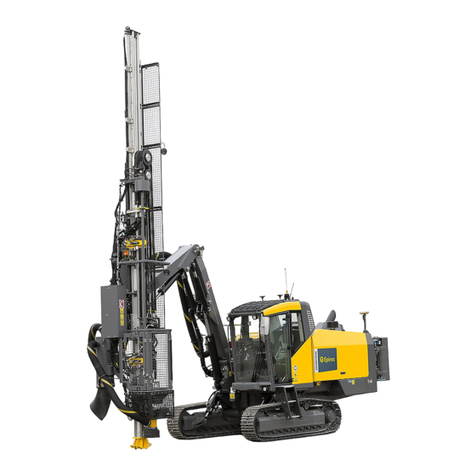
Epiroc
Epiroc SmartROC T35 User manual
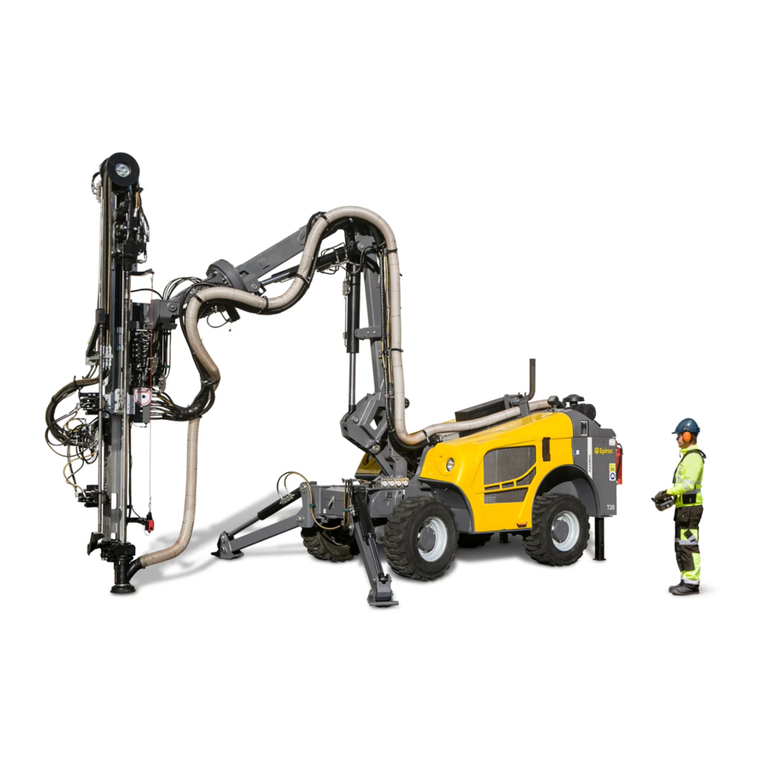
Epiroc
Epiroc Flexi ROC T20 R Instructions for use
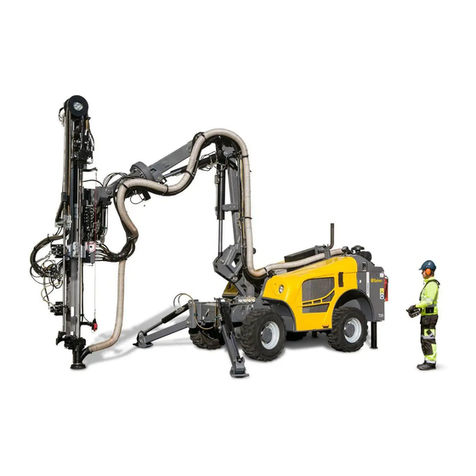
Epiroc
Epiroc FlexiROC T20 R Specifications

Epiroc
Epiroc Secoroc COP 44 Specifications

Epiroc
Epiroc Secoroc COP 54 User manual
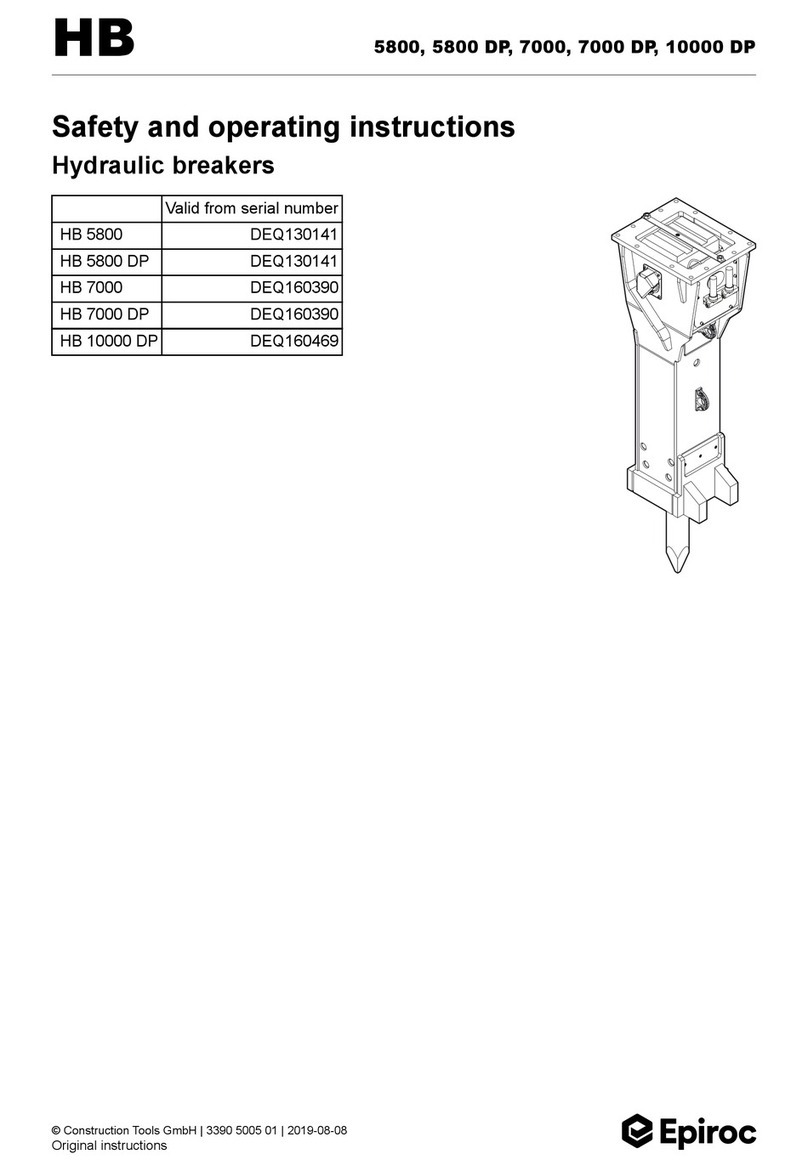
Epiroc
Epiroc DEQ130141 Maintenance and service guide
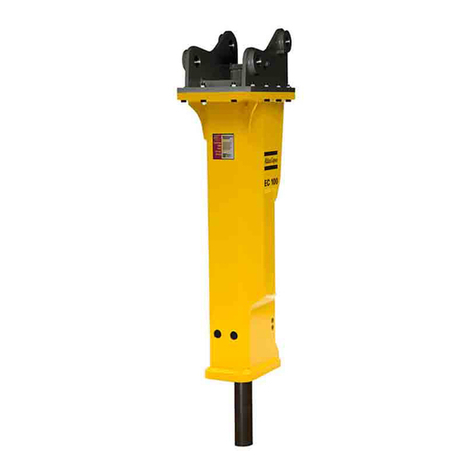
Epiroc
Epiroc EC Series Maintenance and service guide
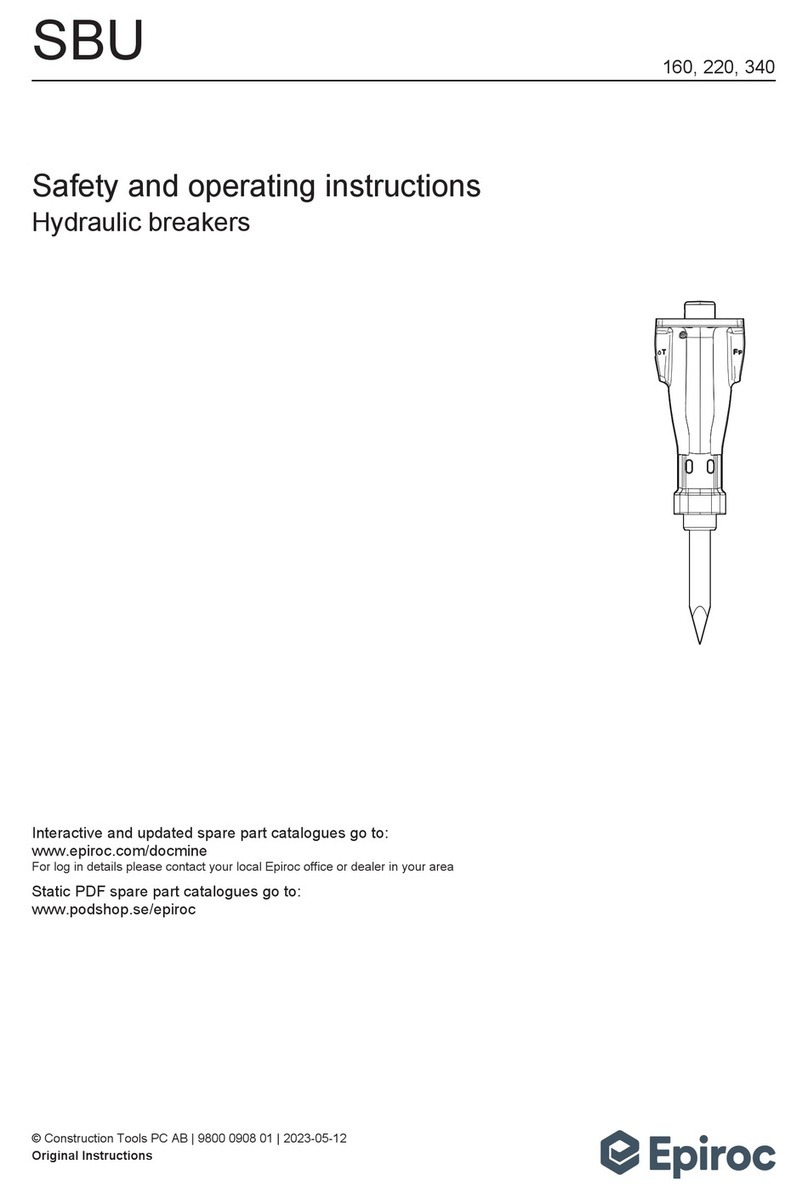
Epiroc
Epiroc SBU 160 Maintenance and service guide

Epiroc
Epiroc EC Series Maintenance and service guide
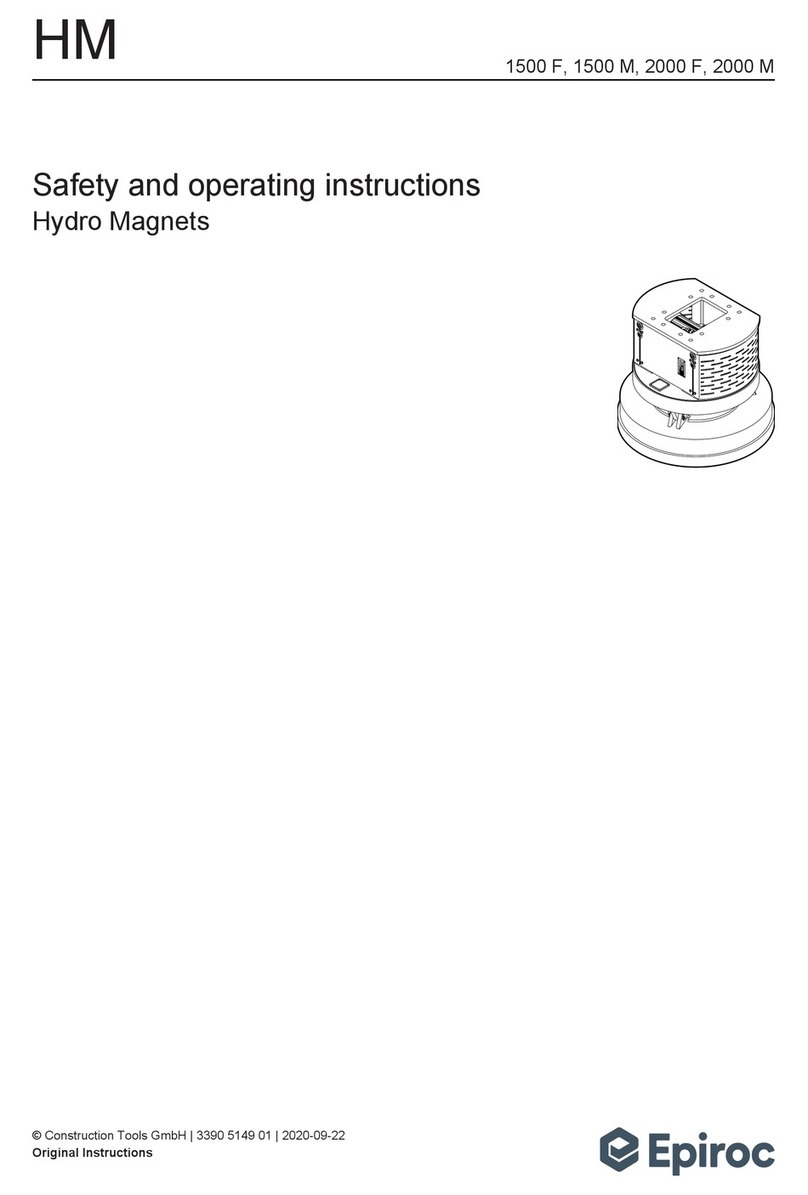
Epiroc
Epiroc HM Series Maintenance and service guide
